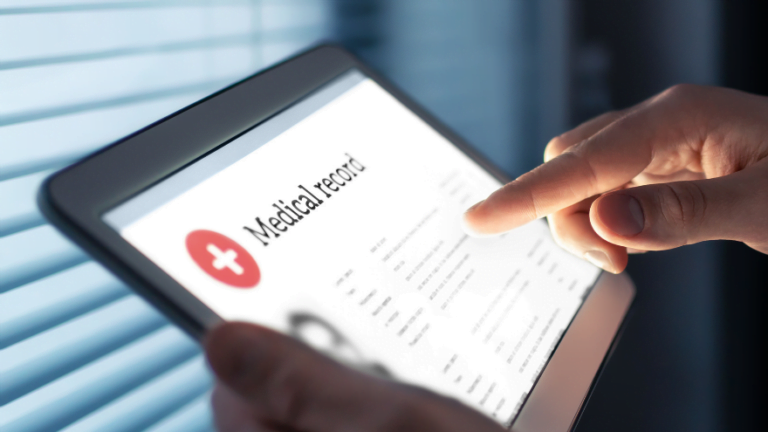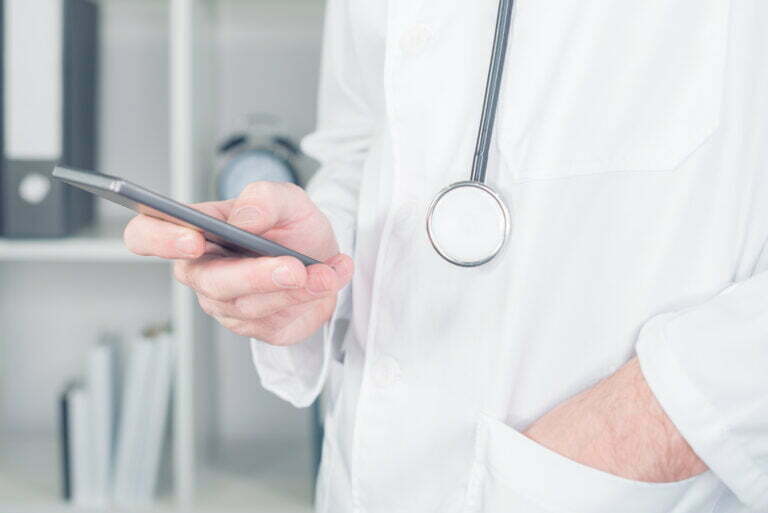Remote Patient Monitoring (RPM) has emerged as a vital component of modern healthcare delivery, offering a means to monitor patients’ health remotely and proactively intervene when necessary. In this digital age, where technology is advancing at an unprecedented pace, the Centers for Medicare Services (CMS) plays a crucial role in regulating and supporting RPM services.
This article provides an in-depth exploration of CMS’s involvement in RPM, its significance, challenges, and future prospects.
Introduction to Remote Patient Monitoring (RPM)
Definition and concept
RPM involves the use of digital technologies to collect health data from individuals in one location and transmit it to healthcare providers in another location for assessment and intervention. It enables continuous monitoring of patients’ vital signs, symptoms, and other health parameters without the need for in-person visits.
Evolution of RPM in healthcare
RPM has evolved significantly over the years, starting from basic telemedicine systems to sophisticated, cloud-based platforms incorporating advanced sensors, wearable devices, and artificial intelligence. This evolution has been driven by advancements in technology, changes in healthcare delivery models, and the growing need for more efficient and patient-centered care.
The Significance of CMS in Healthcare Regulation
Overview of CMS
The Centers for Medicare Services (CMS) is a federal agency responsible for administering Medicare, Medicaid, and other healthcare programs in the United States. It sets standards and regulations to ensure the quality, safety, and effectiveness of healthcare services provided to millions of Americans.
CMS’s role in healthcare regulation
CMS plays a crucial role in regulating various aspects of healthcare, including reimbursement policies, quality measures, and patient safety standards. It establishes guidelines for healthcare providers participating in Medicare and Medicaid programs, ensuring compliance with federal regulations and promoting high-quality care delivery.
Understanding Remote Patient Monitoring (RPM) Services
Defining RPM
RPM services encompass a wide range of technologies and strategies aimed at monitoring patients’ health remotely. These may include wearable devices, mobile apps, telehealth platforms, and remote monitoring software. RPM enables healthcare providers to track patients’ health status, medication adherence, and disease progression in real-time, facilitating early intervention and personalized care management.
Importance in modern healthcare
RPM plays a critical role in modern healthcare delivery by improving access to care, enhancing patient engagement, and reducing healthcare costs. It enables proactive management of chronic conditions, early detection of complications, and timely intervention, leading to better health outcomes and increased patient satisfaction.
The Nexus of CMS and RPM
CMS’s involvement in RPM
CMS actively promotes the adoption and utilization of RPM services as part of its efforts to improve healthcare quality and efficiency. The agency provides guidance on billing and reimbursement for RPM-related services, encourages healthcare providers to integrate RPM into their practice, and conducts research to assess the impact of RPM on patient outcomes.
Regulatory framework overview
CMS has established a regulatory framework to govern the use of RPM services, ensuring patient safety, data privacy, and compliance with federal laws and regulations. This framework includes guidelines for healthcare providers on documenting RPM encounters, securing patient data, and adhering to billing requirements.
Key Components of CMS’s Support for RPM
Policy initiatives
CMS has implemented various policy initiatives to support the adoption and expansion of RPM services, such as the Chronic Care Management (CCM) program, the Remote Physiological Monitoring (RPM) program, and the Medicare Access and CHIP Reauthorization Act (MACRA). These initiatives aim to incentivize healthcare providers to offer RPM services, improve care coordination, and enhance patient outcomes.
Reimbursement guidelines
CMS provides reimbursement for RPM services under certain conditions, allowing healthcare providers to bill for remote monitoring of patients’ health data and communication with patients or caregivers. The agency has established specific billing codes and reimbursement rates for RPM-related services, making it financially feasible for providers to offer these services to eligible patients.
Benefits of CMS’s Support for RPM
Improved patient care
By supporting RPM services, CMS helps improve patient care by enabling early detection of health issues, timely intervention, and personalized care management. RPM allows healthcare providers to monitor patients’ health status more closely, adjust treatment plans as needed, and prevent unnecessary hospitalizations or emergency room visits.
Cost reduction
RPM has the potential to reduce healthcare costs by preventing complications, minimizing hospital admissions, and optimizing resource utilization. By keeping patients healthier and more engaged in their care, RPM can lead to significant cost savings for healthcare systems, payers, and patients alike.
Challenges and Solutions in Implementing RPM under CMS
Regulatory compliance challenges
One of the main challenges in implementing RPM under CMS is ensuring compliance with regulatory requirements, such as documentation standards, privacy regulations, and billing guidelines. Healthcare providers must navigate these challenges by implementing robust compliance programs, training staff on RPM protocols, and leveraging technology solutions to streamline documentation and billing processes.
Innovative solutions
To address the challenges of implementing RPM under CMS, healthcare providers can explore innovative solutions such as remote monitoring platforms, telehealth technologies, and data analytics tools. These solutions can help improve care coordination, enhance patient engagement, and optimize clinical workflows, ultimately leading to better outcomes for patients and providers.
Compliance Requirements for RPM Services
Documentation standards
CMS requires healthcare providers to maintain accurate and comprehensive documentation of RPM services, including patient consent, device setup, monitoring data, and clinical interventions. Documentation should comply with CMS guidelines and be accessible for audit purposes to ensure transparency and accountability in RPM service delivery.
Privacy and security regulations
CMS imposes strict privacy and security regulations on RPM services to protect patients’ health information from unauthorized access, use, or disclosure. Healthcare providers must implement appropriate safeguards, such as encryption, access controls, and data encryption, to safeguard patient data and comply with federal privacy laws, such as the Health Insurance Portability and Accountability Act (HIPAA).
CMS’s Role in Quality Assurance for RPM
Ensuring effective monitoring
CMS plays a critical role in ensuring the quality and effectiveness of RPM services by establishing performance metrics, monitoring outcomes, and providing feedback to healthcare providers. The agency evaluates the impact of RPM on patient outcomes, care delivery processes, and healthcare costs, helping to identify best practices and areas for improvement.
Metrics and evaluation
CMS measures the quality of RPM services using various metrics, such as patient engagement, clinical outcomes, and cost-effectiveness. Healthcare providers are required to report these metrics to CMS regularly, allowing the agency to assess the performance of RPM programs, identify trends, and make data-driven decisions to improve care delivery and patient outcomes.
RPM Technologies Approved by CMS
Approved devices and platforms
CMS evaluates and approves RPM technologies based on their safety, effectiveness, and compatibility with existing healthcare systems. Approved devices and platforms may include wearable sensors, remote monitoring software, telehealth platforms, and mobile apps designed to collect and transmit patient health data securely and accurately.
Emerging technologies
In addition to approved RPM technologies, CMS continues to evaluate emerging technologies that have the potential to enhance remote monitoring capabilities and improve patient outcomes. These may include advancements in wearable sensors, artificial intelligence, predictive analytics, and remote communication technologies, enabling more personalized and proactive care delivery.
Collaborative Efforts: CMS, Providers, and Patients
Provider-patient engagement
CMS encourages collaborative efforts between healthcare providers and patients to promote the adoption and utilization of RPM services. Providers should engage patients in shared decision-making, educate them about the benefits of RPM, and address any concerns or barriers to participation. Patients, in turn, should actively participate in their care, adhere to monitoring protocols, and communicate effectively with their healthcare team.
Patient education initiatives
To support patient engagement and empowerment, CMS promotes patient education initiatives focused on remote monitoring technologies, self-management strategies, and healthy lifestyle behaviors. Providers should offer educational resources, such as written materials, videos, and online courses, to help patients understand the purpose of RPM, interpret monitoring data, and take proactive steps to manage their health effectively.
Addressing Equity and Accessibility in RPM
Overcoming socioeconomic barriers
CMS recognizes the importance of addressing socioeconomic barriers to ensure equitable access to RPM services for all patients, regardless of their income, education, or geographic location. Providers should implement strategies to overcome barriers such as digital literacy, access to technology, and transportation issues, ensuring that vulnerable populations have equal opportunities to benefit from RPM.
Expanding access
To expand access to RPM services, CMS encourages providers to offer telehealth and remote monitoring options to patients in underserved communities, rural areas, and other medically underserved areas. This may involve partnering with community organizations, leveraging mobile health clinics, or deploying telehealth vans to reach patients in remote or isolated locations, ensuring that everyone has access to high-quality healthcare services.
Future Directions: CMS’s Vision for RPM
Anticipated policy changes
Looking ahead, CMS is likely to implement policy changes to further promote the adoption and integration of RPM into routine care delivery. These changes may include expanding reimbursement for RPM services, updating billing codes, and revising quality metrics to incentivize providers to offer RPM as part of standard care practices.
Innovation in RPM services
CMS expects ongoing innovation in RPM services, driven by advancements in technology, changes in healthcare delivery models, and evolving patient needs. Future innovations may include more advanced sensors, predictive analytics, artificial intelligence algorithms, and remote communication platforms, enabling more personalized, proactive, and efficient care delivery.
DrKumo RPM Solution with CMS’s Role in RPM: Enhancing Healthcare Delivery Through Innovative Technology
DrKumo RPM Solution is a comprehensive remote patient monitoring (RPM) platform designed to streamline healthcare delivery and improve patient outcomes. By integrating with CMS’s guidelines and regulations, DrKumo RPM Solution offers healthcare providers a user-friendly and compliant solution for monitoring patients’ health remotely.
With DrKumo RPM Solution, healthcare providers can easily collect and transmit patients’ health data to comply with CMS documentation standards and privacy regulations. The platform enables seamless communication between patients and providers, facilitating proactive management of chronic conditions and early intervention when necessary.
Furthermore, DrKumo RPM Solution aligns with CMS’s focus on quality assurance and performance metrics by providing robust monitoring capabilities and actionable insights. Healthcare providers can track key performance indicators, measure outcomes, and demonstrate the effectiveness of RPM services to CMS and other stakeholders.
Takeaways
CMS plays a central role in supporting and regulating Remote Patient Monitoring (RPM) services, ensuring their safety, efficacy, and accessibility. Through policy initiatives, reimbursement guidelines, and quality assurance measures, CMS promotes the adoption and utilization of RPM as a valuable tool for improving patient care, enhancing care coordination, and driving innovation in healthcare delivery.
As we look ahead, it is clear that RPM will continue to play an increasingly important role in modern healthcare delivery, supported by CMS’s ongoing efforts to expand access, promote innovation, and ensure quality and safety. By embracing the future of RPM and collaborating with CMS, healthcare providers can transform the way care is delivered, ultimately leading to better health outcomes and improved patient experiences.
Take your healthcare delivery to the next level with DrKumo RPM Solution – the comprehensive remote patient monitoring platform designed to align with CMS’s guidelines and regulations. Contact us today!
Disclaimer: The information provided in this article serves as an overview of CMS’s role in supporting and regulating Remote Patient Monitoring (RPM) services. It is intended for informational purposes only and should not be construed as medical or legal advice.








